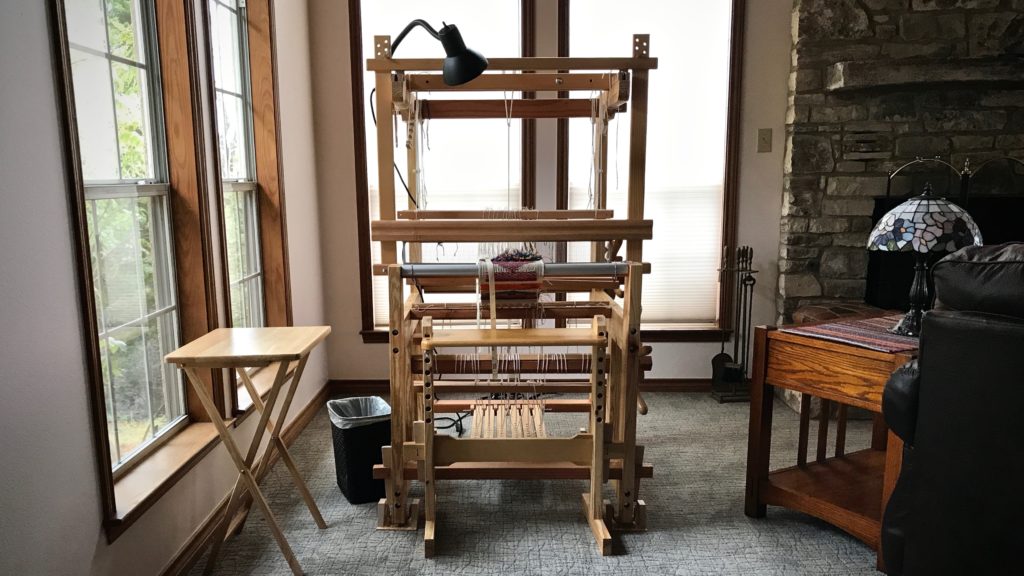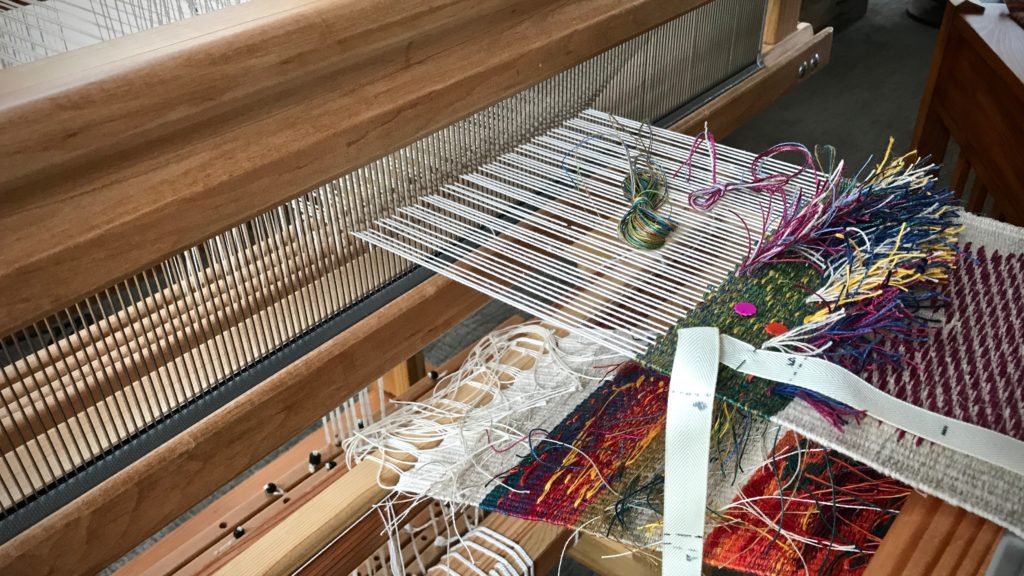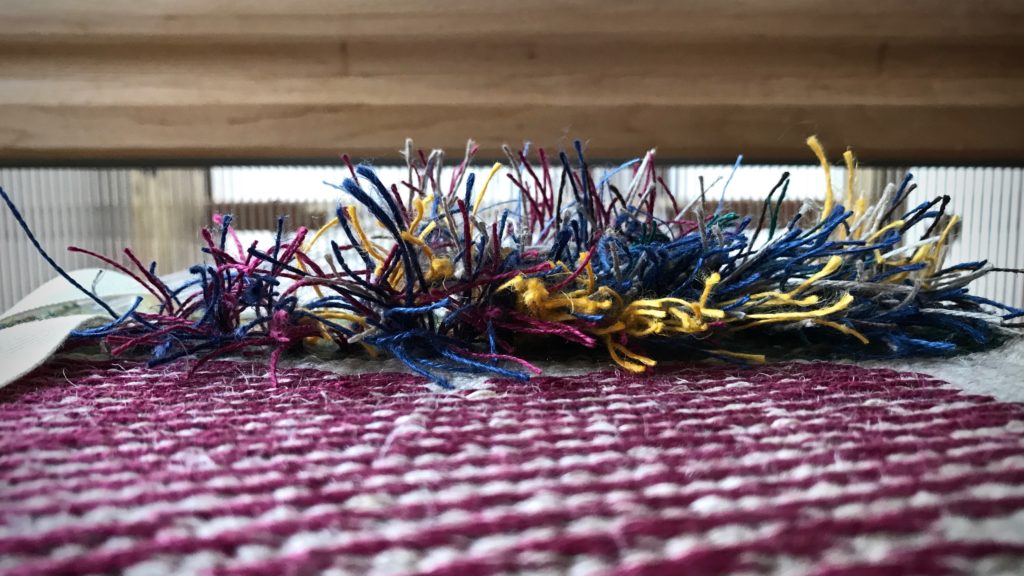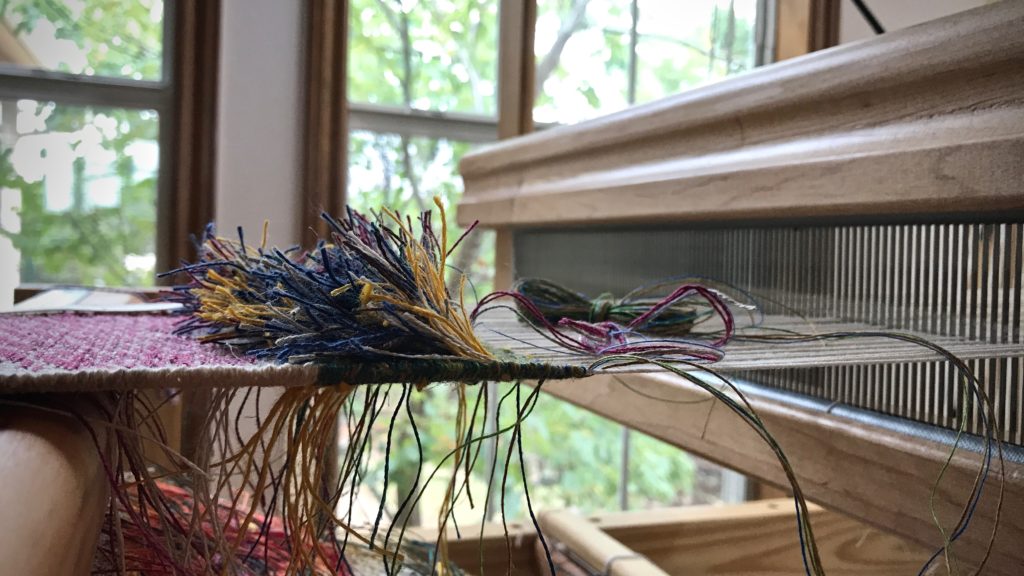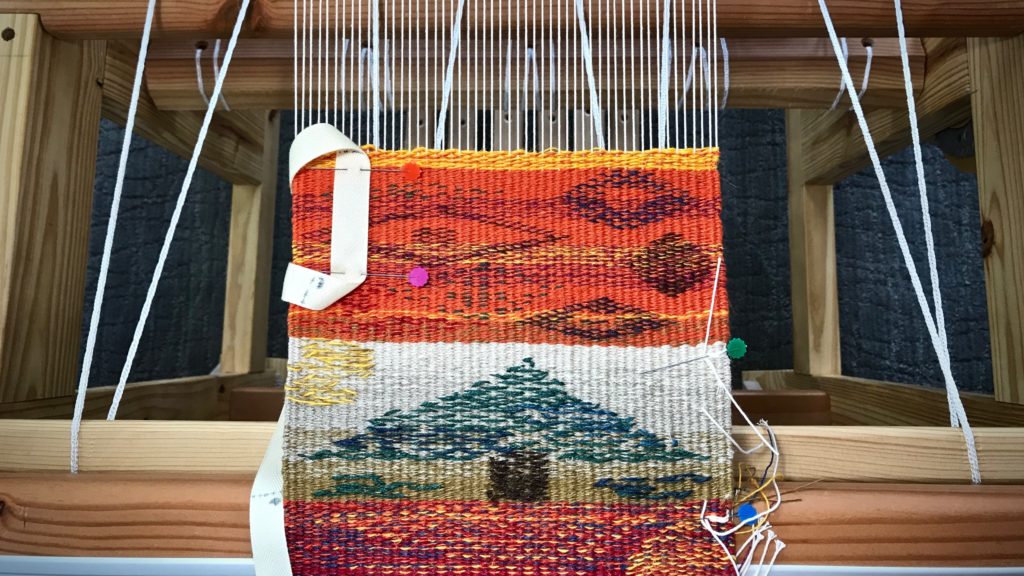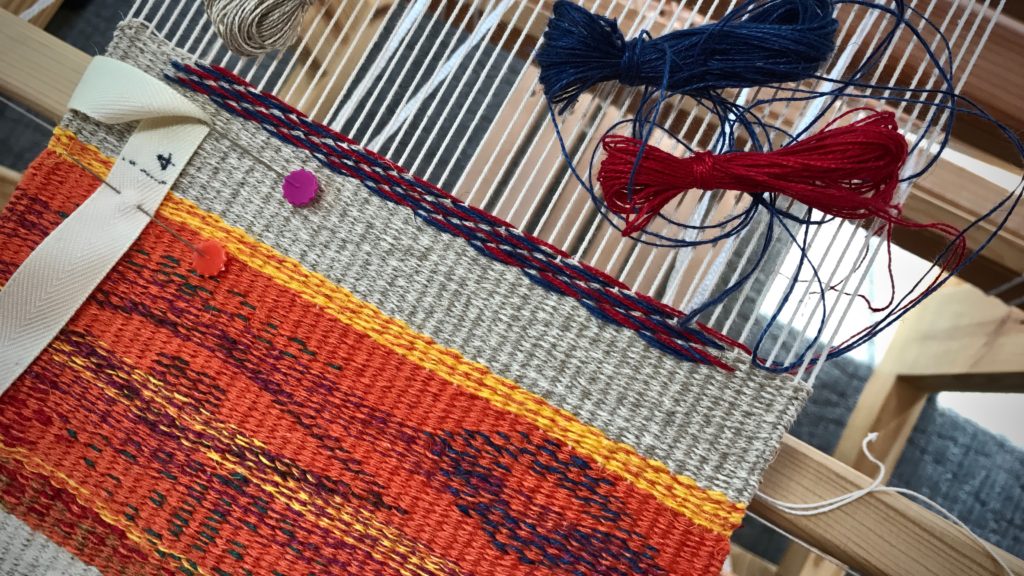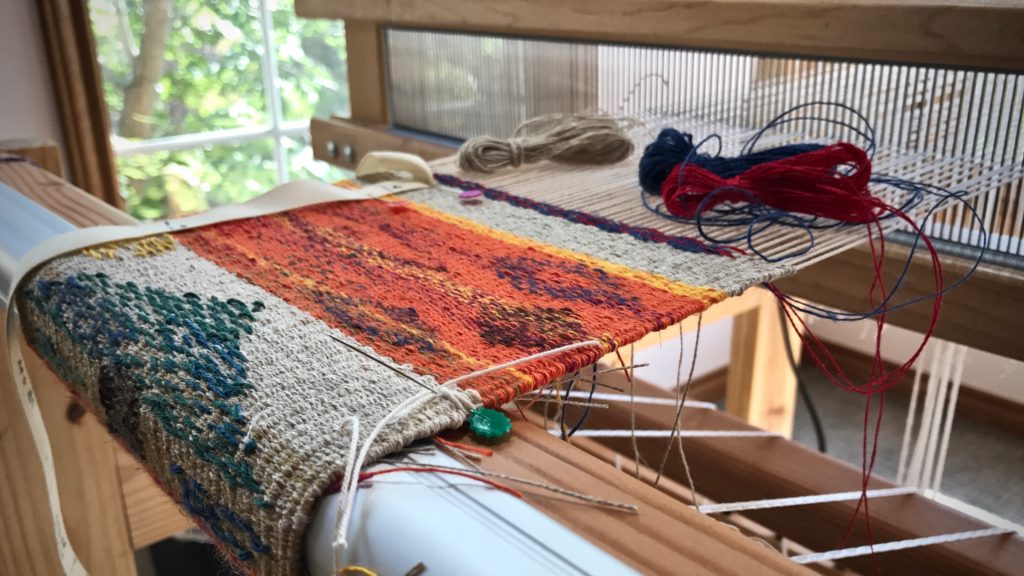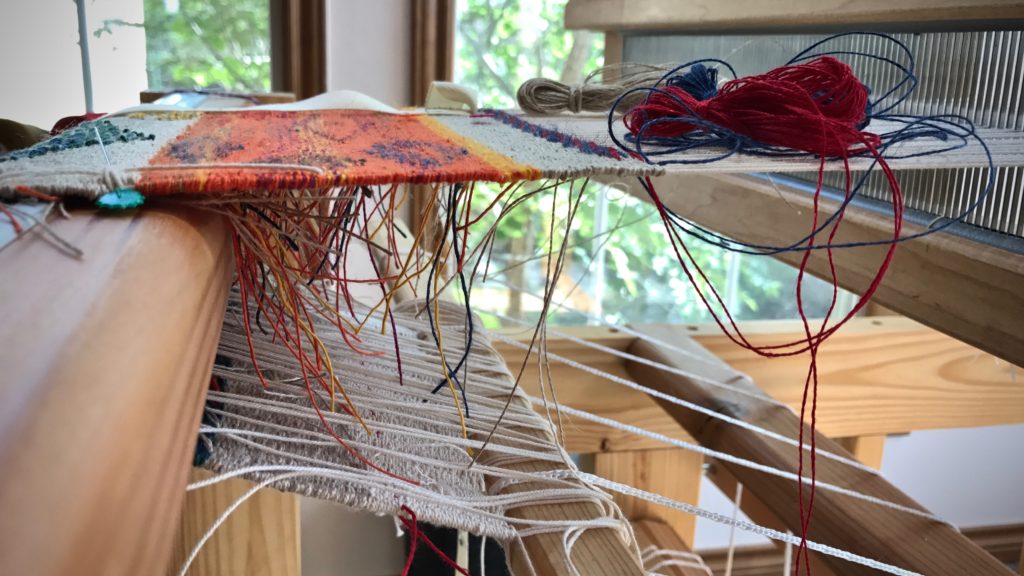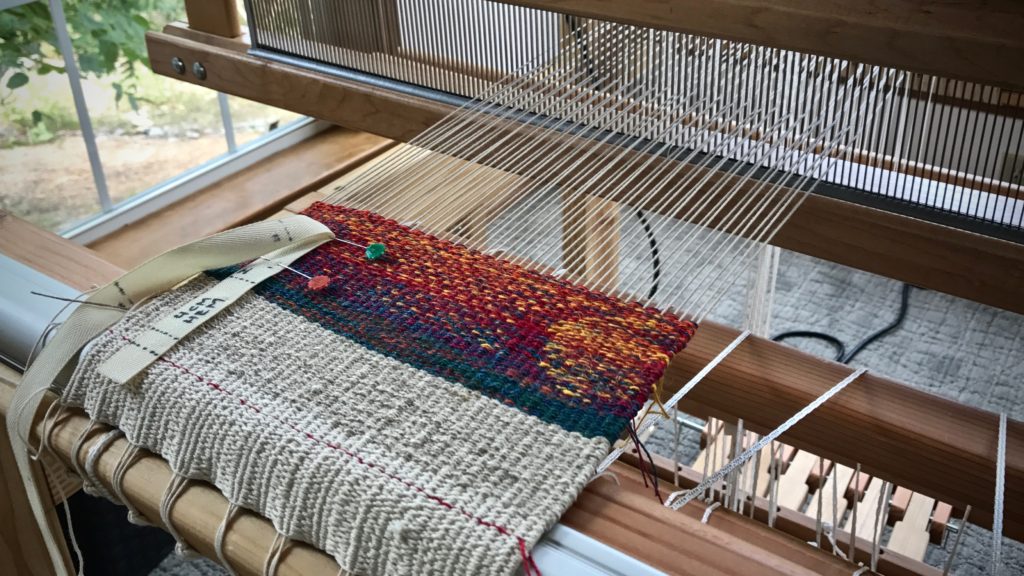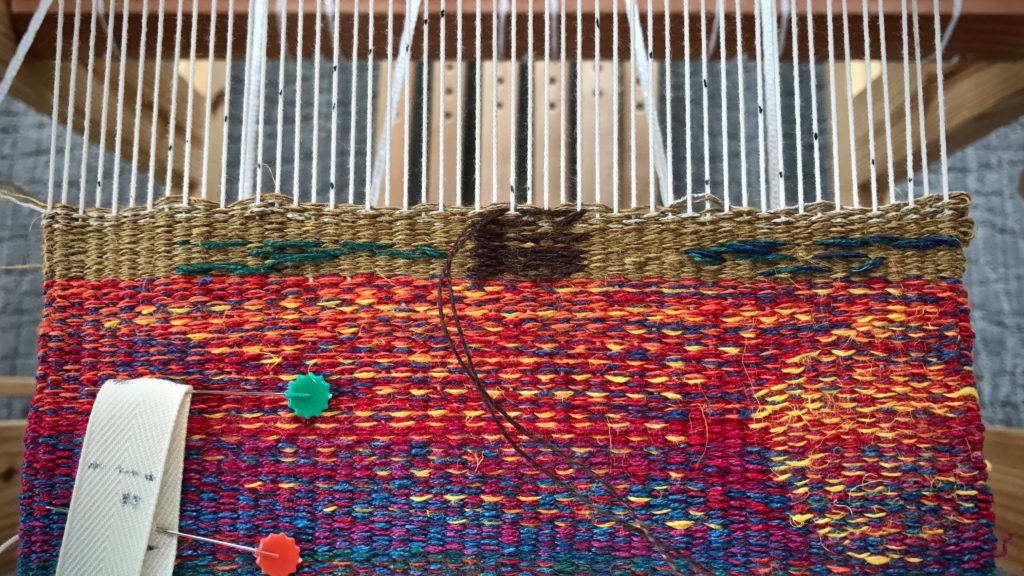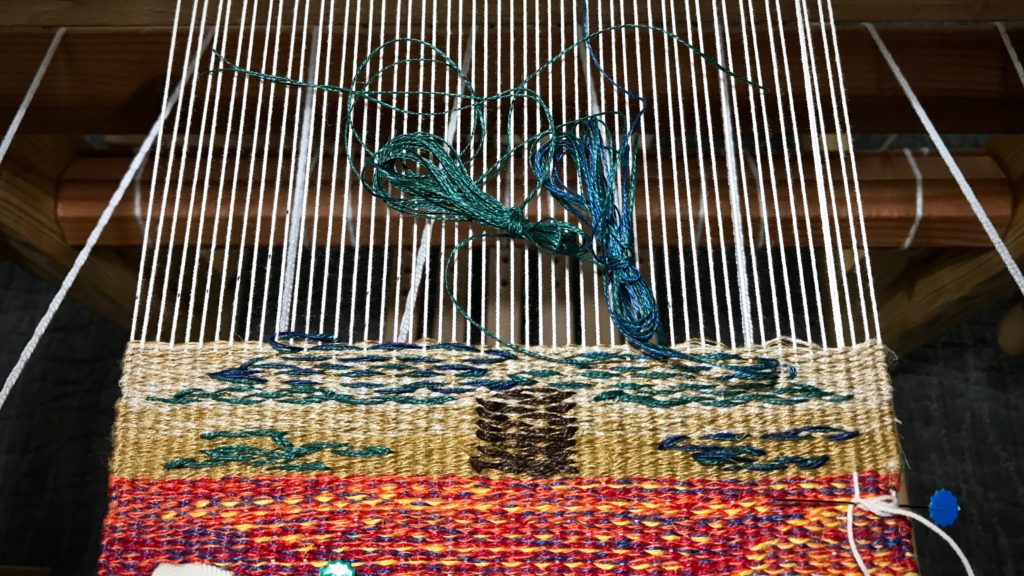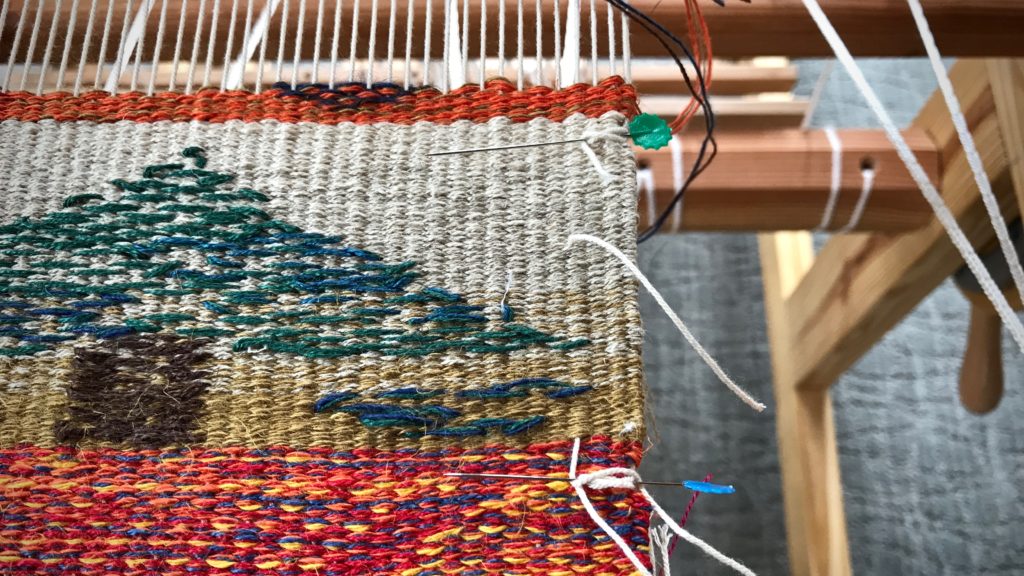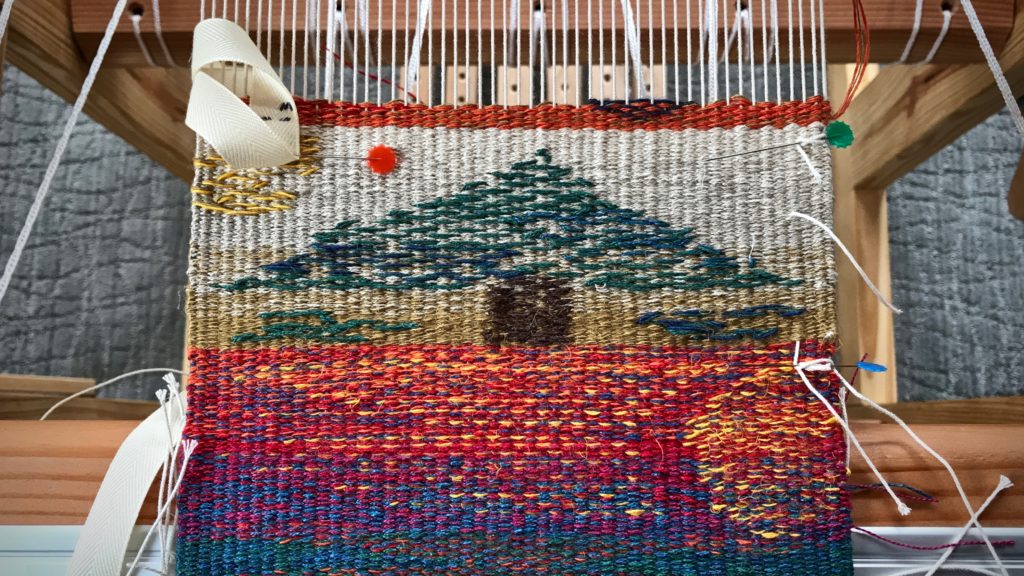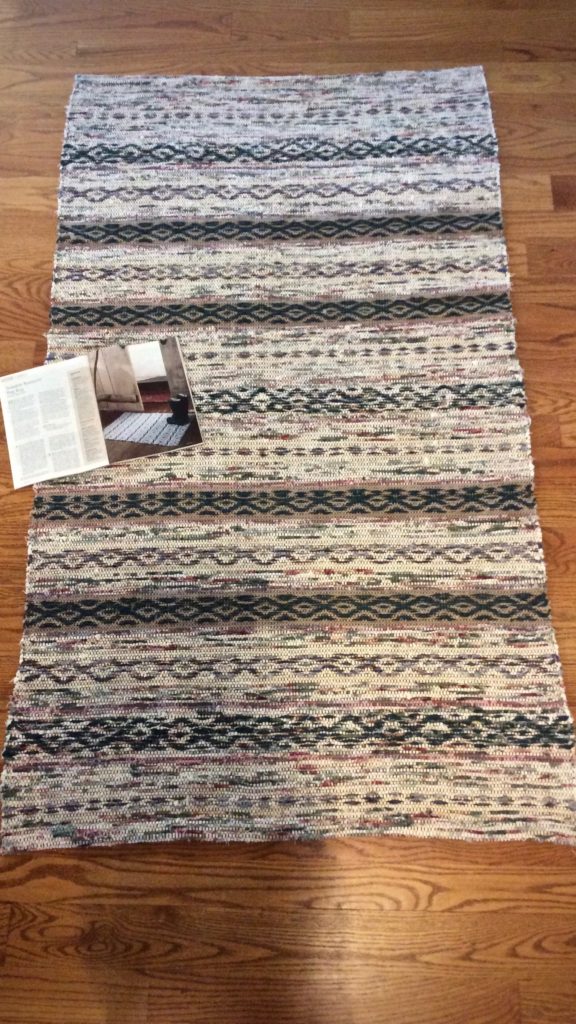Rya knots and loops of threads look chaotic at first. These linen rya knots will never be tame, but that’s to be expected. Linen butterflies have created a swath of wild rya “flowers” planted in a smooth linen “lawn.”
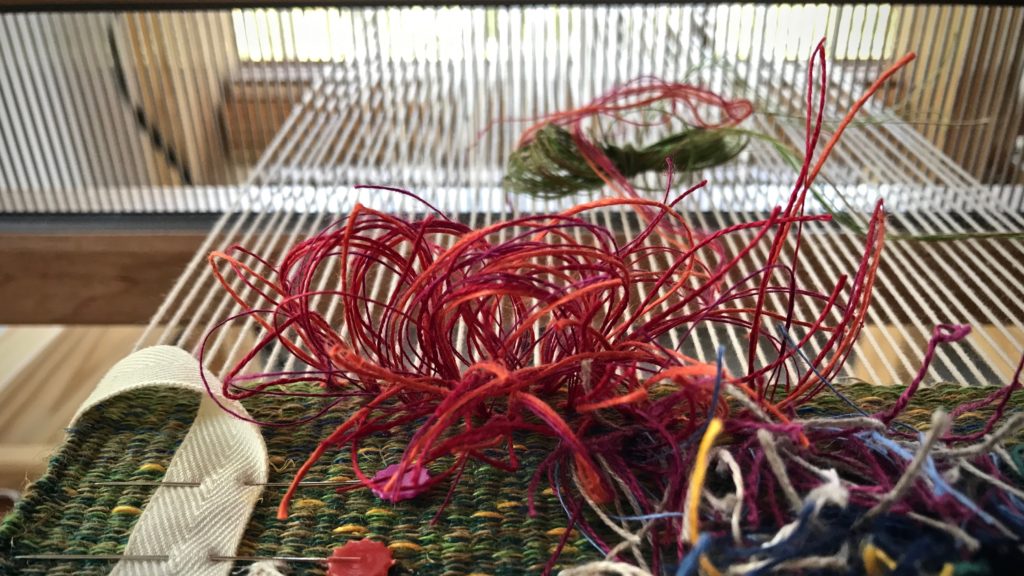
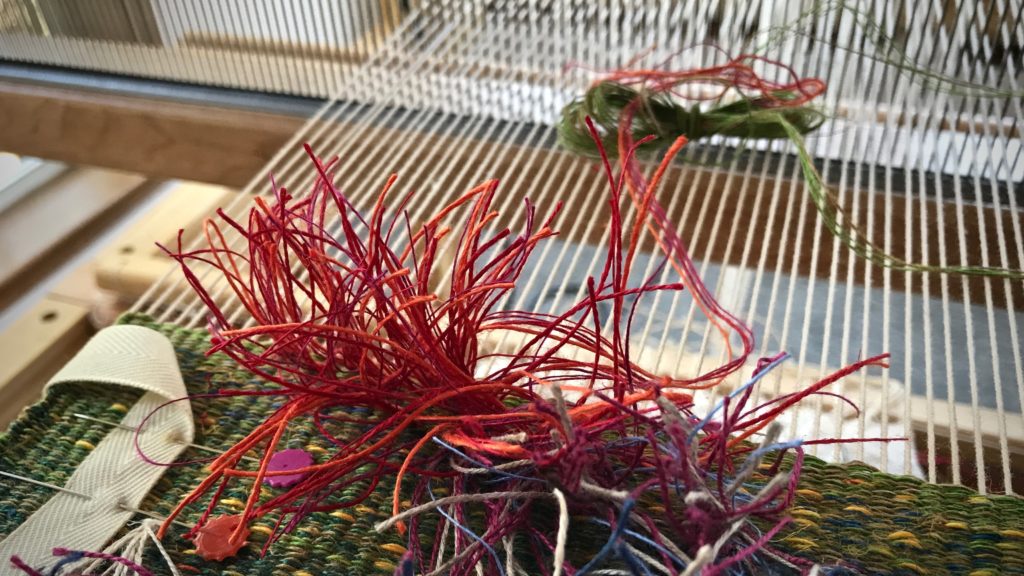
Each section of rya starts with a butterfly made of several strands of linen in assorted weights and colors. I tie each rya knot on a pair of warp ends, leaving a loop between knots. There are two to three passes of plain weave between each row of knots. When I finish a butterfly, I go back and clip all the loops. After the loops are cut, I trim the tops of the threads to even out the rya “flower garden.”
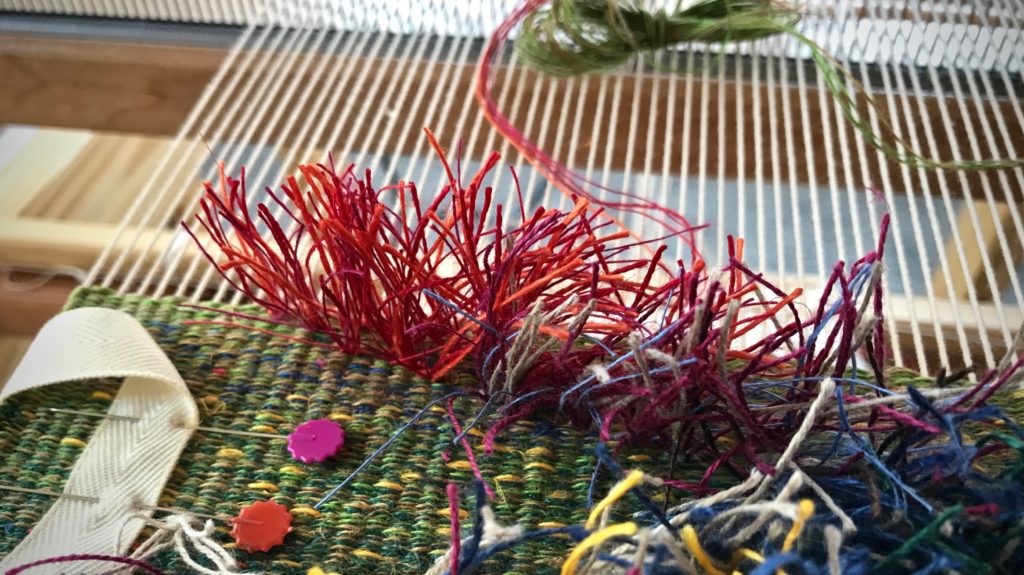
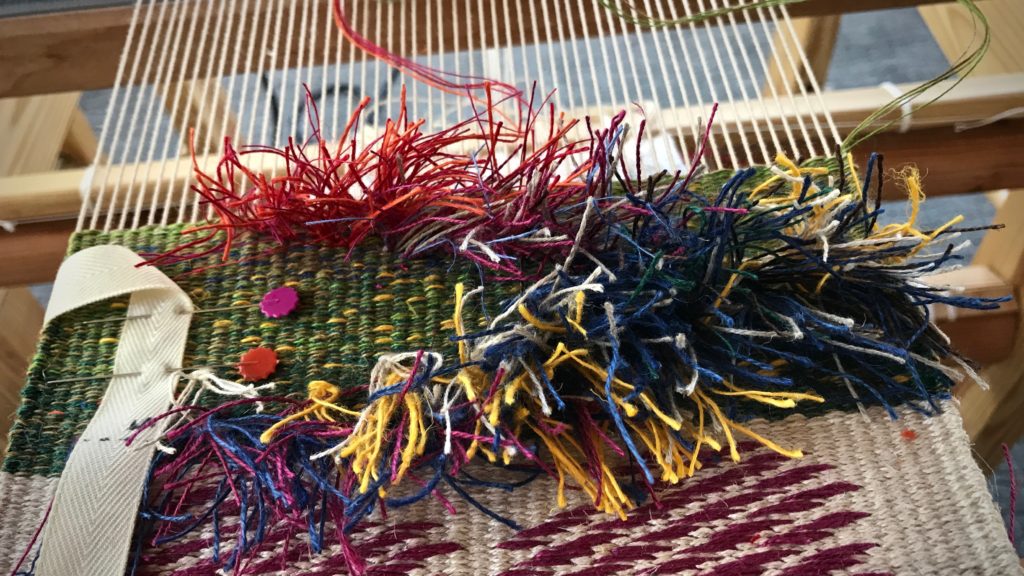
When things around us look a mess and don’t make sense, full of knots and loops, there is one thing we must do. Keep holding on to faith. Fight to keep your faith strong. Faith in Christ Jesus will carry you through uncertainty and will reveal the first ray of hope. The loops will be clipped, the threads will be trimmed. A garden of color will emerge. Faith waits for that.
May your faith be strong.
All the best,
Karen

